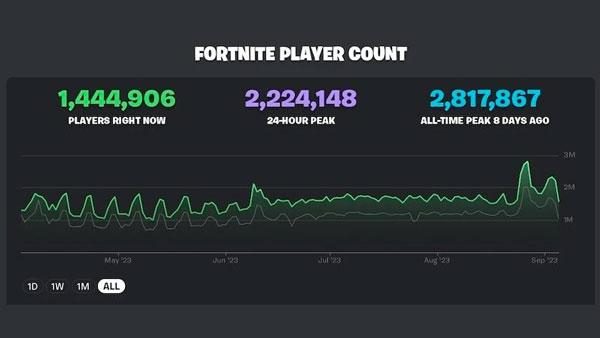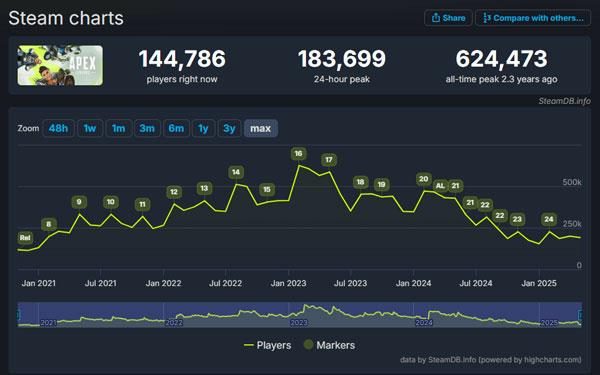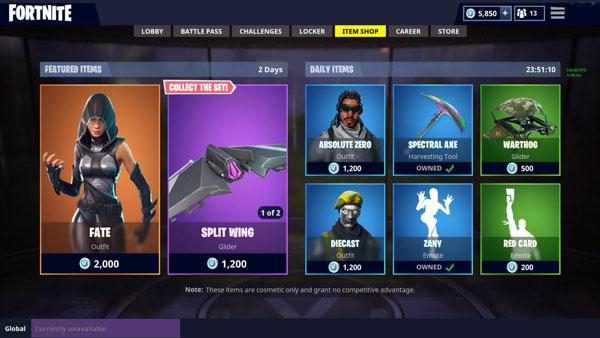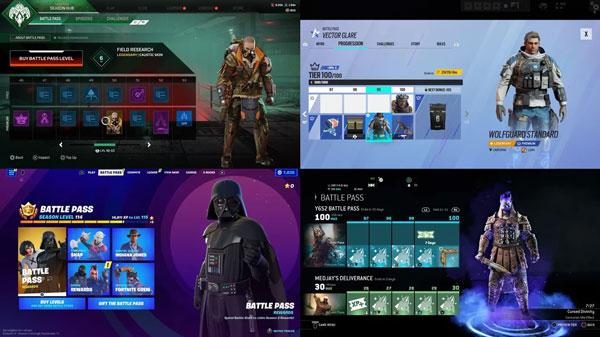Are you stuck trying to figure out whether Apex vs Fortnite is better for your child? Both are battle royale in type, highly action-packed, and have shooting as their core gameplay, but they each offer a different experience. Apex Legends has fast-paced team-based fighting, while Fortnite gives construction elements blended with building blocks and bright graphics.
In this guide, we will analyze both games on the factors of their gameplay, active users count, and even in-game spending. So, let us find out which one is really optimised for kids!
Introduction to Apex and Fortnite
If exhilarating and fun games are what you’re looking for, then it’s highly likely you know of Fortnite and Apex Legends. These both happen to be among the most popular battle-royale games. Like in every other game, you drop from a plane onto a vast map containing hundreds of players, and your sole objective is to outlast everyone else.
Apex Legends:
The most unique characteristic of this video game is that it lets you select different heroes who, in the game, are called legends. Each Legend has special powers like healing allies or scanning for foes.
Since battles are team-based, working together is important to achieve succes,s which makes the game very difficult and challenging. This helps with keeping players engaged and the pace of the action is quite rapid too.



Fortnite:
Apart from combat, players can build walls and ramps to further protect themselves, increasing their self-defense capabilities. Defending oneself in such a manner enriches the gameplay Fortnite has to offer, making it easier to enjoy and more creative at its core.



To summarize, exploration is complemented by crafting in Fortnite, giving players the freedom to tap into their imagination. In contrast to Apex, which focuses on speed alongside team coordination. If you are someone who seeks an adventure, then these types of games allow you to explore stunning landscapes while adventuring with your friends.
Monitor their gaming habits and ensure a healthy digital balance.
Gameplay comparison – Apex vs Fortnite
Understanding a game’s mechanics is important when you want to explore new games. Apex Legends vs Fortnite, they are examples of the battle royale genre, but they are quite different in how one experiences them. One focuses on frenetic teamwork while the other tends more towards solo play, and values strategic creativity heavily. Let’s look at both to see which one works for you.
Apex Legends: Fast-paced, tactical shooter
- Legend systems:
In Apex Legends, you fight in squads of three. Each player selects one Legend out of many who are available. Subsequently, each picks a role that includes healing shield granting, enemy tracking, defending, and others. Therefore, coordinating with friends becomes important because everyone has roles that rely on synergy.
- Ping system:
In Apex, players can ping markers to signify enemies, treasures like boxes, and even notable places without uttering a word. This enables even the most introverted players to help their teammates.
- Quick movement and smooth controls:
Smooth controls, together with quick movement as a core part of the game, greatly improve the paradigm presented with Apex Legends. There seems to be tons that can be done, such as sliding down hills.
Moreover, new ways to escape or surprise your foes are provided by the game’s mechanics, which help you stay alert throughout the match.
Fortnite: Creative combat with building mechanics
- Combat and building simultaneously: One feature that sets Fortnite combat apart from competitors is its ability to seamlessly integrate construction with combat. One can erect walls and staircases for vantage points during fights.
- Instead of just shooting their way through obstacles placed in their path, players now have the opportunity to construct their route towards victory creatively.
- Gathering available resources: Players are able to gather materials such as woods and bricks from trees as well other objects on the ground and buildings. These resources can not only aid in building fortifications but will also enable players to devise more complex strategies.
- World Extras and Character Emotes: In addition, different features within the game include fun character skins, maps, and silly emotes that everyone can enjoy together. Along with live events like story or concert moments, Fortnite gives players something new and interesting to look forward to every time they log on.
Which is better for your child’s play style?
Both games are entertaining, but each caters to a different type of player. If your kids prefer quick-paced action alongside seamless teamwork, then Apex Legends is a solid choice.
However, for those who lean towards construction creativity and tactics strength, then Fortnite is more aligned with their preferences. Winning often requires careful planning alongside execution, as speed plays an equally crucial role.
So, take some time thinking about what best applies to your kids’ choices. Every option has something different to offer.
Player count and community
While looking at Fortnite or Apex Legends for your child it’s best to consider their age demographics, popularity trends and community interactions. They might look the same at first glance, but both of these games cater to a different set of ages and gaming preferences.
Let us check out first the player count on Apex Legends vs Fortnite, and what audience your child would be part of.
Average age of Fortnite and Apex players
- Fortnite:
The game still appears to attract younger audiences. Besides having a considerable number of players aged between 18-24, there also seems to be quite a large proportion of kids as well as young teens around the 8-14 year mark.
The appealing cartoonish character graphics, together with bright colors and funny emotes, draw in youthful players. The atmosphere is toned down, which makes it more relaxing, a less intense feeling, energetic fun, which suits children who enjoy action-packed entertainment without any strain or commitment lingering over them.
- Apex Legends:
This game appears to be more popular with older teenagers and young adults. Most players are aged between 16 and 24, and the game demands good reflexes, real-time decision making, brisk action, effective teamwork, and strategy. It is set in a world that feels real, which tends to overwhelm younger audiences.
However, younger children who cannot formulate strategies are going to struggle trying to understand the mechanics without adult supervision because of the game’s rapid pace.
Apex Legends vs Fortnite player count:
- Fortnite:
Fortnite seems to lead in terms of player base, surpassing its closest competitor by quite a margin, reaching over 650 million registered users by late 2023. During special live events, anywhere from 1 million to over 44 million players log in. On average, Fortnite sees about 1-3.5 million daily active users.



Having regular updates every few weeks means there is something for old and new players alike which helps keep things fresh all the time. Given such a big community, your child will always find someone to play with whenever they want, making it convenient no matter the schedule.
- Apex Legends:
Although not having numbers like Fortnite, Apex does boast hardcore fans. By 2021, the game had over a hundred million registered users, along with over two million weekly active users.
On Steam, it has an average of roughly 120 thousand concurrent players with busy hours peaking up to two hundred fifty thousand. The more intimate community tends to make the gaming experience feel closer.



In-game purchases and monetisation
It is important for parents to understand free-to-play games like Fortnite and Apex Legends. The two games are mobile free-to-play titles with optional in-app purchases that your child might try to access. Understanding these issues will enable a parent to make choices that would prevent unwanted financial costs.
In this section, we want to analyze in-game purchases of both games and seek out which one offers better value for money.
Skins, passes, and microtransactions in Fortnite
Fortnite’s continual growth is a result of its colorful graphics and new improvements over time, which are truly pleasing to the eyes. Your child may be inclined to spend money on “cosmetics” that do not include paying to win additions. Rather, Fortnite permits spending on:
- Skins for changing a character’s appearance.
- Pickaxes and back bling for style and fun.
- Emotes and dances.
- A Battle Pass.



Everything here is obtainable with V credits (Fortnite’s in-game currency); however, they come at a price, which can lead people astray. For example, purchasing a skin for 1,500 V-Bucks seems easy. But, in reality, it will set them back by $15 right off the bat. Kids tend to greatly overestimate their purchases.
With Fortnite continually adding new seasonal events, there are even more reasons for players to engage with the game. One of the most compelling drivers is the Store, which updates daily, providing time-sensitive cosmetics, collaborations from different franchises, and special emotes for holidays, ensuring players stay engaged.
Apex Legends’ battle pass and store
As with Fortnite, Apex Legends also features in-game transactions that lack any pay-to-win elements, such as:
- Legend and weapon Skins.
- New Legends with different abilities.
- A Battle Pass for purchasing seasonal rewards.
- Apex Coins (like V-Bucks).



However, unlike Fortnite, Apex has lavish store content but only a few store update grabs. This means that your child gets fewer exciting spending opportunities, which could potentially help curb impulsive purchasing decisions.
Which game is safer for kids financially?
Although both games were designed ruthlessly around spending money. However, with strict financial management, I would recommend Apex Legends as the comparatively safer option.
This is because with Fortnite, daily store updates for characters and their cosmetics, kids are unable to think before swiping their card. Fortnite easily makes it to the top of attention economy games with its constantly increasing demand to buy new things.
How to avoid accidental purchases with FlashGet Kids?
To block your child from unintended or unauthorised spending, it’s best to utilise apps tailored exclusively for parental controls. It gives me great pleasure to inform you that FlashGet Kids stands out from all other applications due to its proactive surveillance and notifications.
The app was developed specifically for the oversight of online children’s activities. Here is its functioning:
- Activity Tracking: With FlashGet Kids, you can check what type of apps or games your kids have access to and for how long.
- Spending Alerts: If there’s a possibility in your mind that there are attempts through in-app purchases by the kids. Then FlashGet Kids has systems capable of sending real-time parent alerts without any secondary notification systems.



- Restrict Game Access During Study Hours: Additionally, during designated homework periods and bedtime hours. Games can also be set to be automatically shut off using FlashGet Kids’ screen time features.
- Screen mirroring: You can monitor how your children are engaging with their video games and check if they are spending money on the applications.
Hence, these games continue to be accessible for children while addressing a parent’s worries and allowing kids to enjoy their childhood to the maximum.
Final verdict – Apex vs Fortnite: Which should you choose?
So, both Fortnite and Apex Legends offer exciting and fun gameplay experiences. However, the selection is based on their age and maturity level as well as interests. Younger kids who are not well-versed will enjoy the creative construction parts of the games. While older ones will prefer the faster team combat of Apex.
Also, it seems that Apex is focused on making money from players spending more than Fortnite does, which adds unnecessary complexities to the game. In this regard, parent involvement ensures gaming sessions remain enjoyable and safe.
Hence, recommend using parental control apps like FlashGet Kids. With such options, it becomes easy to supervise matters like screen time alongside spending restrictions during breaks along with online engagements during leisure hours of a child with minimal supervision.

